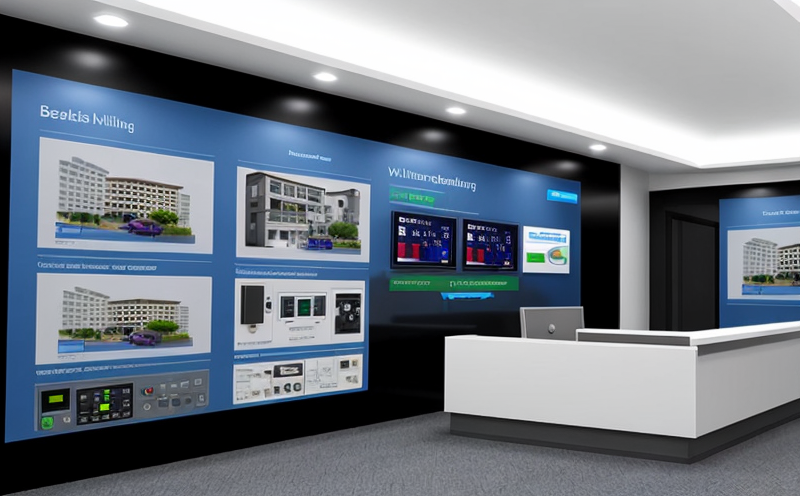IEC 62386-103 Device and Network Compliance
The IEC (International Electrotechnical Commission) 62386 series of standards is designed to ensure the interoperability, safety, and security of building automation and control systems. Specifically, IEC 62386-103 Device and Network Compliance focuses on verifying that individual devices within a smart building or infrastructure network meet their specified requirements for communication and interaction with other components.
This standard is crucial because it addresses the growing complexity of modern buildings. As more systems are interconnected, ensuring they communicate effectively and securely becomes paramount to maintaining system integrity and preventing failures. By adhering to IEC 62386-103, manufacturers can ensure their products integrate seamlessly with other devices in a smart building environment.
The standard covers various aspects of device interoperability, including:
- Communication protocols
- Data exchange formats
- Error handling and recovery mechanisms
- Security measures to protect data integrity
Testing according to IEC 62386-103 involves several key steps. First, the device under test must be connected to a network that simulates real-world conditions. This setup allows for comprehensive testing of how the device behaves in different scenarios, such as:
- Data transmission rates
- Error detection and correction capabilities
- Response times to various commands
- Security protocols during data exchange
The testing process also requires rigorous preparation of the devices. This includes:
- Calibration of sensors used in the device
- Configuration of network settings to match expected operational environments
- Installation of security patches and updates for compatibility checks
After conducting these tests, detailed reports are generated that document each aspect of compliance. These reports serve as a valuable resource for quality managers and compliance officers by providing evidence that the devices meet international standards.
Incorporating IEC 62386-103 into your development process ensures long-term reliability and efficiency in smart building systems. It helps avoid costly reworks or field failures due to unforeseen interoperability issues. Compliance with this standard is increasingly becoming a necessity as more countries adopt stringent regulations for the safety and security of automated infrastructure.
Why It Matters
The importance of IEC 62386-103 cannot be overstated in today’s interconnected world. As buildings become smarter, with more devices and networks working together seamlessly, the risk of compatibility issues increases significantly. Proper adherence to these standards ensures that all components work flawlessly together, enhancing overall system performance.
From a security perspective, IEC 62386-103 plays a vital role in protecting sensitive data exchanged between devices within a smart building network. By implementing robust security measures outlined in this standard, organizations can mitigate risks associated with unauthorized access or data breaches.
The standard also contributes to reducing operational costs by minimizing downtime caused by communication failures or misconfigurations. When every device operates optimally and communicates effectively, maintenance and troubleshooting become more efficient processes.
Adherence to IEC 62386-103 fosters innovation within the industry. As organizations strive to meet these stringent requirements, they push boundaries in terms of technology advancements. This leads to continuous improvement across various aspects of building automation systems.
In summary, compliance with IEC 62386-103 is not just about meeting regulatory demands but also about creating a more reliable, secure, and efficient smart building ecosystem.
Benefits
The benefits of undergoing IEC 62386-103 Device and Network Compliance testing are numerous and far-reaching:
- Enhanced Interoperability: Ensures seamless communication between different devices, enhancing the overall functionality of smart building systems.
- Better Security: Protects against unauthorized access and data breaches by implementing strict security protocols as per international standards.
- Increased Efficiency: Reduces operational costs through minimized downtime due to effective troubleshooting and maintenance practices.
- Innovation Fostering: Encourages continuous improvement in technology, leading to more advanced solutions for smart buildings.
- Regulatory Compliance: Helps organizations stay ahead of evolving regulatory requirements, ensuring long-term sustainability.
- Customer Satisfaction: Builds trust with customers by delivering reliable and secure products that meet international standards.
- Risk Mitigation: Minimizes potential risks associated with interoperability issues or security vulnerabilities.
In conclusion, IEC 62386-103 Device and Network Compliance testing offers substantial advantages in terms of reliability, security, efficiency, and innovation. It is a critical step towards achieving world-class standards in building automation systems.
Why Choose This Test
Selecting IEC 62386-103 Device and Network Compliance testing for your smart building projects offers several compelling reasons:
- International Recognition: Adherence to international standards like IEC ensures that your products are recognized globally, making them more attractive to international markets.
- Enhanced Reputation: By choosing this rigorous testing process, you demonstrate a commitment to quality and reliability, which enhances your brand reputation among both consumers and partners.
- Competitive Advantage: In an increasingly competitive market, being able to showcase compliance with cutting-edge standards can give you a significant edge over competitors.
- Risk Management: Early identification of potential problems through comprehensive testing helps prevent costly mistakes later in the project lifecycle.
- Customer Confidence: Providing customers with proof that your products meet stringent international standards builds trust and fosters long-term relationships.
- Future-Proofing: Investing in compliance ensures that your systems remain relevant and adaptable to future technological advancements.
In summary, choosing IEC 62386-103 Device and Network Compliance testing is a strategic decision that aligns with global trends and enhances the overall quality of smart building projects.





